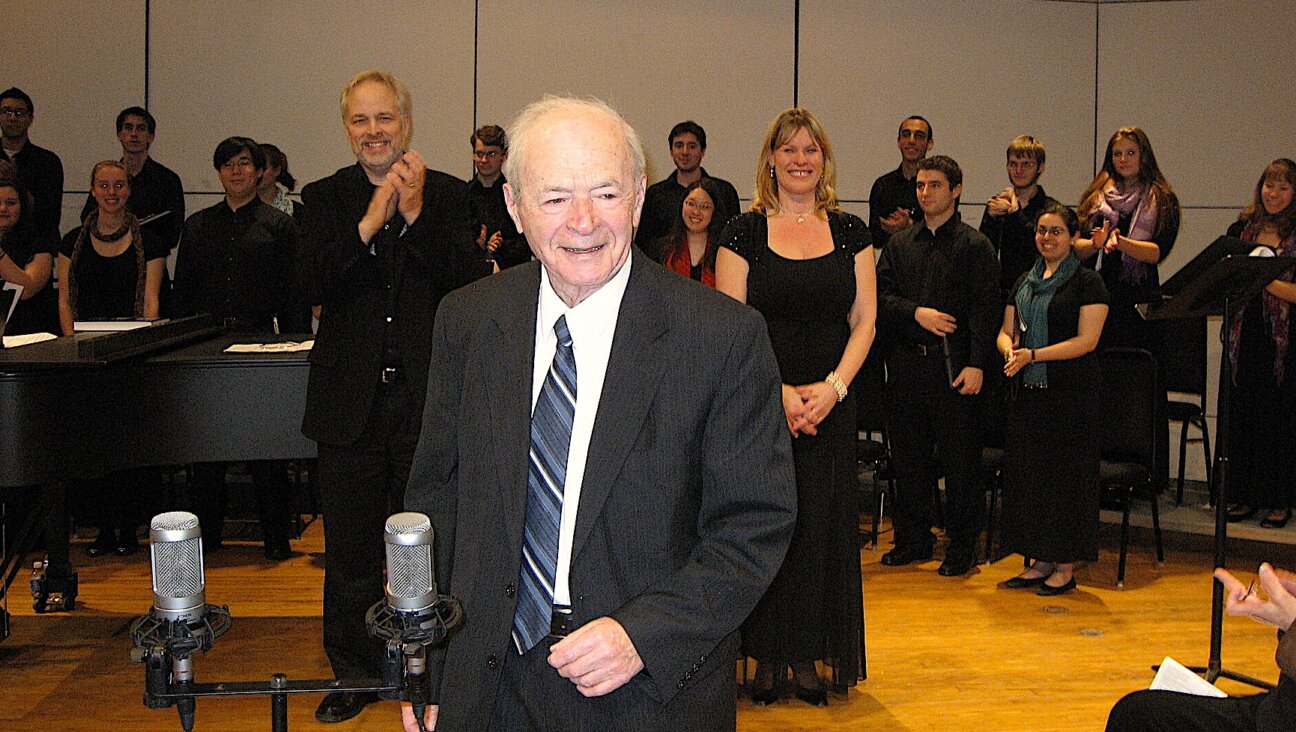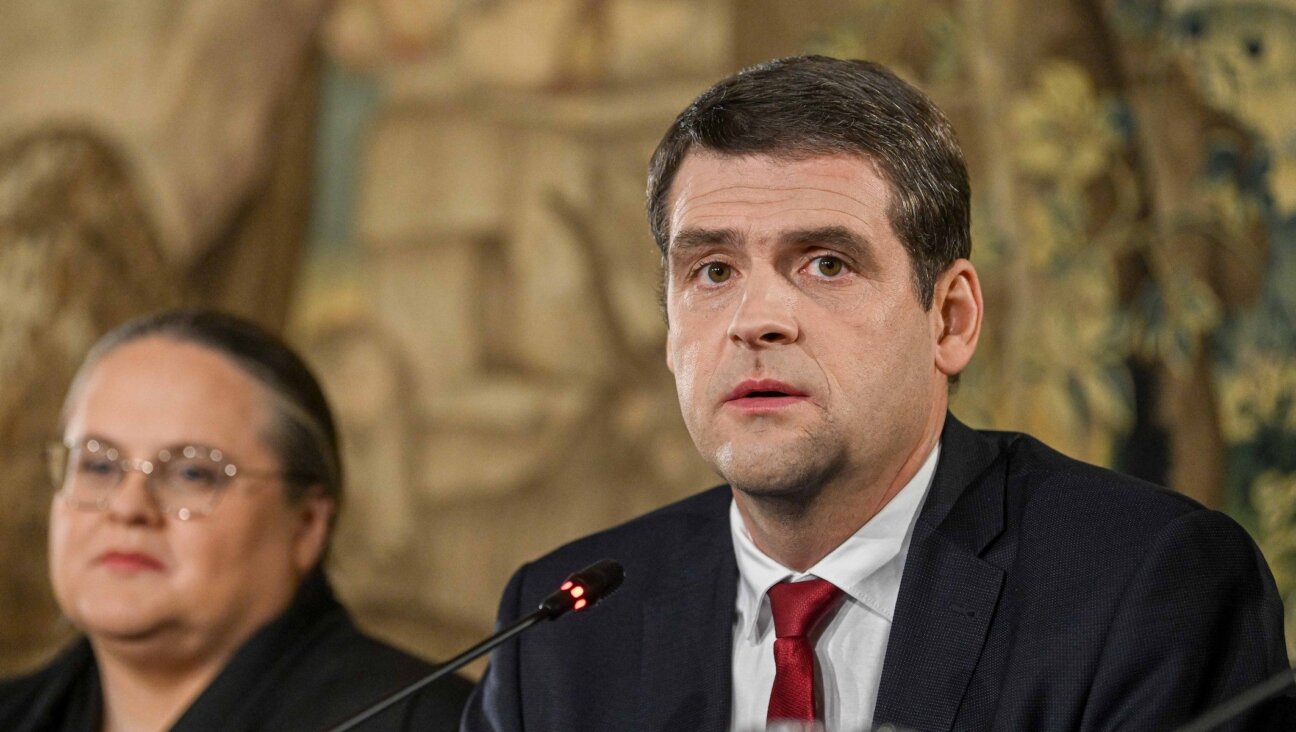Does Chabad Have An Answer To ‘The Rebbetzin Question’?

Graphic by Angelie Zaslavsky
Every year, in a massive hall at a New York hotel, 3,000 women from 100 countries around the world gather for the annual conference for Chabad-Lubavitch’s female emissaries the Chabad Kinus Hashluchos banquet dinner.
I’ve been to the banquet several times. Every year, I am struck by the energy in the room. The hall is always packed to capacity, a sea of wigs from wall to wall. It’s a rare opportunity for Orthodox women to gather and exchange ideas, hold hands, encourage one another.
Throughout the event, women ascend to the stage one by one to share stories of travel adventures that few ‘typical’ Orthodox Jewish women could ever imagine.
What is it like to move to Chengdu, China, without knowing a word of Chinese? Or how about flying three hours every month just to go to the mikveh? What’s it like picking up and moving to Iceland, just as its parliament proposes a bill to ban circumcision, all for the sake of creating a local Jewish community for those who need it?
As a rabbi’s wife myself, I can’t help but admire the system that’s so close to me yet just out of reach (I am not Chabad). I envy the support system these women have, the way they have this space where they can bond over the challenges of communal work. Chabad couples jointly work to raise their income; I envy the way they are considered integral — not a side perk thrown in alongside a rabbi.
The ‘right wing’ Orthodox community has continued to struggle with accepting women’s leadership within a traditional halakhic setting. The Orthodox establishment (whatever that means) is desperately trying to draw red lines around what is permissible and what is beyond the pale of Orthodoxy; the Orthodox Union and the Rabbinical Council of America have both released numerous statements on the issue, without offering real conclusions beyond forbidding women’s ordination.
And worse still, Rebbetzins in Orthodox communities are always adjunct. In most rabbinic search processes, the unspoken truth is that the rabbi’s wife is considered a nice bonus, free labor attached to her husband.
Perhaps it’s time we start taking a page, unexpectedly, from Chabad.
What Chabad has gotten right is its embrace of women’s roles and its creation of a network for them, working around the halakhic limitations. The movement empowers its female outreach professionals to not simply be ‘rebbetzin’s, plus-ones to rabbis, defined by marriage alone. Rather they are ‘shluchos’, emissaries, no different from their husbands, the ‘shluchim’.
Yes, that’s right. Female clergy-members — women who are not just coincidentally married to rabbis but rather who choose a career in community building. Shluchos are, for all intents and purposes, co-rabbis, doing pastoral work alongside their husbands — though they’ll probably dismiss it if you ever frame it that way.
After all, if there is no woman engaging with the female seekers who find themselves stumbling across the threshold of the synagogue, then who will? Surely not the rabbi, with his long beard and vodka-laced farbrengen?
Essentially, Chabad — through the Rebbe — has long recognized the deep need for female clergy-members.
“There must be a woman,” the Rebbe once wrote, when insisting that Chabad magazines publish pictures of women. So, too, in real life, beyond the pages of a publication — there ought to be women in public religious spaces.
Now, clearly, the ‘Western feminism’ here is limited. This is certainly no secular definition of “equity”: These women will not serve as halakhic authorities, or officiate ceremonies, or lead services, or count towards a minyan. There is no standard training program here. And yes, many shluchos will often take on a traditionally more ‘feminine’ role, as caregivers and hostesses.
But they are there, on the frontlines of what Jewish outreach is — building schools, giving lectures, running day camps, opening their homes to weary travelers, offering a bowl of hot cholent with a smile.
And that’s a big deal in itself. This is in high contrast to the standard Orthodox ‘Rebbetzin’ in the United States who likely works outside the community, to supplement the family income. Some wives of rabbis certainly want their independent careers; but those who do want to offer their talents to the community have no official capacity for it.
Orthodox congregations are thus left with a glaring void of female leadership and role models, and the numbers show it: In a 2016 Nishma Institute survey of Jews who left Orthodoxy, the findings show (perhaps unsurprisingly) that the status of women is among the most widely cited reasons for leaving Orthodoxy; it was the top reason among Modern Orthodox and the top reason among all women. Among Modern Orthodox women, 37% cited this as a reason why they left Orthodoxy. “More people feel they have been pushed off the derech rather than pulled off the derech,” the report said.
For a place of worship to succeed, one needs committed, professional teamwork — with both male and female participation in leadership positions, however those position titles manifest themselves.
Chabad knows this, and its success is evident.
Whatever title she may take — and regardless of who she is married to — a professional “shlucha” is needed in every community. And the rest of us traditional congregations ought to get on that bandwagon, and quickly, before our children start opting out.
When I tell people that I do pastoral work alongside my husband, whenever I have a chance between my job and my children — hosting Shabbat meals, visiting the ill and the bereaved, setting up singles, taking part in lifecycle events, delivering Torah lectures — I am laughed at. I am told, repeatedly, by many men, “Oh you know it doesn’t work that way. That’s not pastoral work. You’re just a rebbetzin.”
Maybe they’re right. But perhaps I’m not a rebbetzin. Perhaps I want to be a shlucha.
Avital Chizhik-Goldschmidt is the Life/Features editor at the Forward. She was previously a New York-based reporter for Haaretz. Her work has appeared in the New York Times, Salon, and Tablet, and she teaches journalism at Yeshiva University’s Stern College for Women. Follow her on Twitter at @avitalrachel.

















